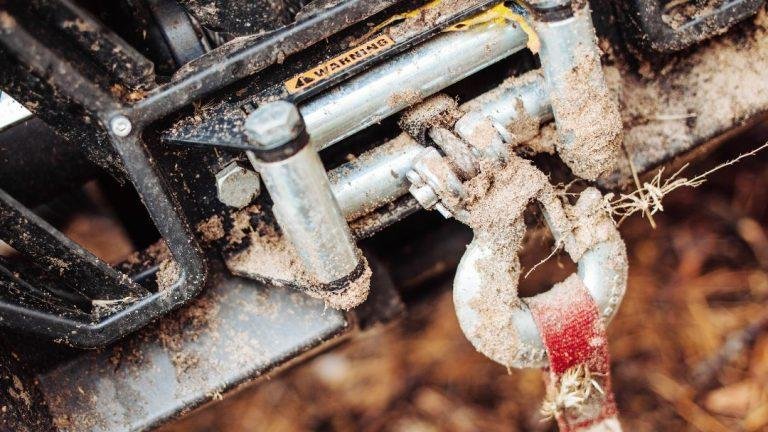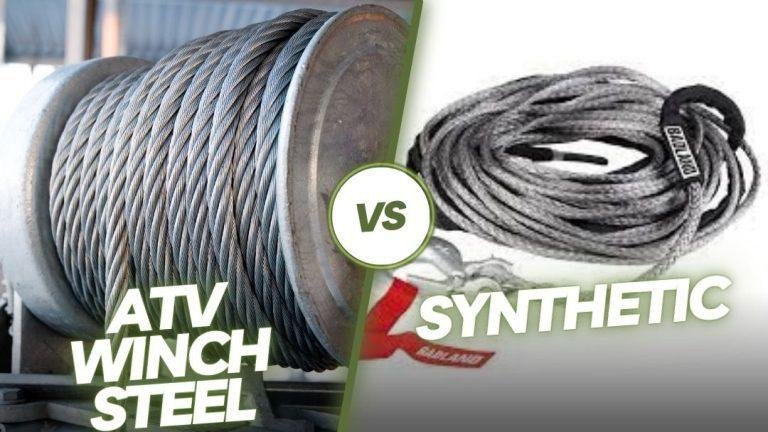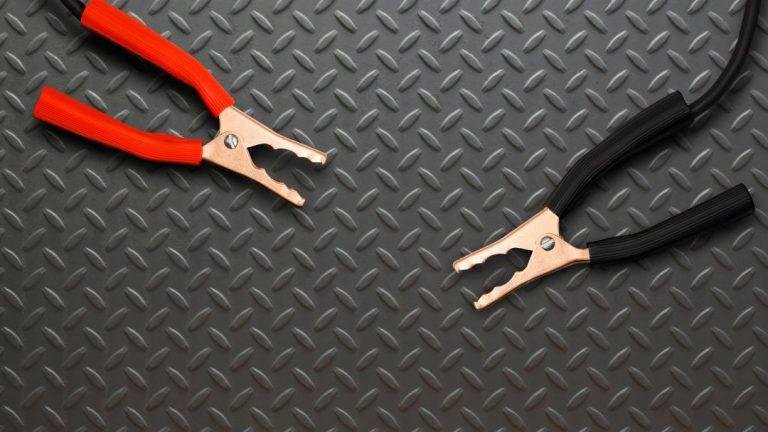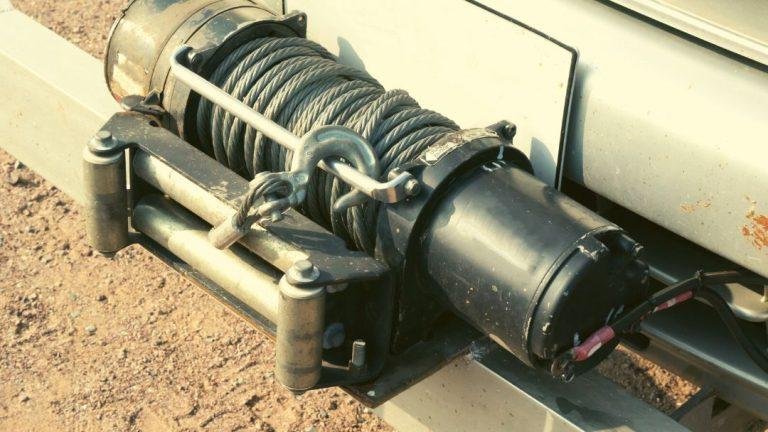A winch on a trailer should be mounted to the front or rear end of the trailer. This placement ensures optimal functionality and accessibility.
When it comes to mounting a winch on a trailer, the positioning plays a crucial role in its performance. The winch should be securely mounted to either the front or rear end of the trailer. This allows for efficient operation and accessibility when needed.
By adhering to the appropriate mounting location, you can ensure that the winch functions effectively and is easily accessible for towing or recovery purposes. So, whether you are using the winch for off-roading adventures or professional hauling, proper placement on the trailer is essential for its optimal use and performance.
Why Optimal Placement Matters
Proper placement of a winch on a trailer is crucial for optimal functionality. Choosing the right position ensures effective pulling power and convenient access when needed.
Ensuring maximum pulling power:
- Properly positioning the winch on your trailer is crucial for maximizing its pulling power.
- The winch should be mounted at the front of the trailer, near the hitch, to ensure a straight line of pull.
- A straight line of pull provides the winch with optimal leverage, allowing it to exert maximum force while pulling heavy loads.
- By mounting the winch at the front, you avoid unnecessary angles that can reduce pulling power.
Maintaining balance and weight distribution:
- Placing the winch in the right spot on the trailer helps maintain balance and proper weight distribution.
- Mounting the winch towards the front of the trailer helps distribute the weight evenly, preventing excessive strain on the hitch and trailer frame.
- Balanced weight distribution improves stability while towing, reducing the risk of accidents or damage to your trailer.
Preventing damage to the trailer:
- Optimal placement of the winch safeguards your trailer from potential damage.
- Mounting the winch on a sturdy part of the trailer frame ensures that it can handle the stress and tension during pulling.
- Reinforcing the area where the winch is mounted protects the trailer from structural damage caused by the winching action.
Remember, the placement of the winch on your trailer impacts its pulling power, weight distribution, and overall integrity. By considering these factors and mounting the winch correctly, you can ensure safer and more efficient towing operations.

Factors To Consider When Mounting A Winch On A Trailer
When mounting a winch on a trailer, it’s important to consider factors such as weight distribution, accessibility, and anchoring points. Finding the right location ensures efficiency and safety during towing operations.
Understanding The Trailer’S Design And Construction
- The first factor to consider when mounting a winch on a trailer is understanding the trailer’s design and construction. This will help determine the best location for the winch to ensure ease of use and functionality.
- Factors to consider include the trailer’s overall layout, frame strength, and available mounting points.
- Some trailers may have designated winch mounting areas, while others may require customization.
Analyzing The Winch’S Specifications
- Another important aspect to consider is the winch’s specifications.
- This includes the winch’s pulling capacity, line speed, and mounting requirements.
- Ensure that the winch’s mounting dimensions align with the trailer’s available space.
- Additionally, check if any accessories or modifications are necessary for proper installation.
Evaluating The Trailer’S Hauling Requirements
- Lastly, it is crucial to evaluate the trailer’s hauling requirements before finalizing the winch mounting location.
- Consider the types of loads the trailer will be used for, their weight, and the terrain where the trailer will be operated.
- This information will help determine the ideal mounting position to distribute the load evenly and provide optimal stability.
- It is important to follow recommended guidelines and safety standards when mounting the winch on a trailer to ensure reliable performance and longevity.
Placement Options For Front-Mounted Winches
Front-mounted winches on trailers offer versatile placement options. You can mount a winch on the trailer’s front for convenience and easy access during recovery operations or hauling heavy loads. Consider the location carefully to ensure optimal performance and functionality.
Pros And Cons Of Front-Mounted Winches
Front-mounted winches provide several advantages and disadvantages when it comes to trailer placement. Let’s explore the pros and cons in detail:
Pros:
- Convenience: Placing the winch at the front of the trailer allows for easy accessibility. You can quickly hook up or disconnect the winch without any hassle.
- Weight distribution: Front mounting helps distribute the weight more evenly, providing better stability for the trailer while towing. It prevents excessive rear-end sagging, ensuring a smooth and controlled ride.
- Improved visibility: By placing the winch at the front, you have a clearer line of sight. This makes it easier to monitor and operate the winch during loading and unloading processes.
- Versatility: With a front-mounted winch, you have the freedom to load or unload the trailer from either end, depending on your requirement.
Cons:
- Increased front-end weight: Front-mounting the winch can add extra weight to the front of the trailer. This may affect the balance and towing dynamics of the vehicle, especially when driving on uneven terrains.
- Space constraints: Depending on the trailer size, the available space may limit the options for front placement. You need to ensure there is adequate room to mount the winch without obstructing other components or compromising safety.
- Potential damage: In some situations, the winch at the front may be susceptible to damage, especially when navigating off-road or tight spaces. Rocks, branches, or obstacles could potentially impact the winch if not adequately protected.
Factors To Consider When Deciding On The Front Placement
Before finalizing the front placement for a winch on your trailer, consider the following factors:
- Type of trailer: Different types of trailers have varying design and weight distribution. Evaluate if the trailer can accommodate a front-mounted winch without compromising stability or functionality.
- Load type: Consider the items you typically haul. If you frequently transport heavy loads that require winching, front mounting may be beneficial. However, for lighter and less frequent loads, alternative mounting options may be more suitable.
- Trailer length: Longer trailers may be more challenging to maneuver, and front mounting the winch could potentially affect turning radius. Evaluate if the additional weight at the front might impact the overall trailer length management.
- Frequency of use: If you frequently use the winch, front placement could offer convenience and ease of operation. Assess if the benefits outweigh any potential drawbacks.
- Personal preference: Ultimately, your personal preference and specific needs should play a vital role in the decision-making process. Evaluate your unique requirements and choose a placement that aligns with your trailer usage.
Remember, the placement of a winch on a trailer can significantly impact its performance, stability, and overall towing experience. Assess the pros and cons along with the specific factors mentioned above before making a final decision.
Placement Options For Rear-Mounted Winches
When mounting a winch on a trailer, there are multiple placement options available for rear-mounted winches. These options provide flexibility and ensure optimal functionality for towing needs. Ultimately, the choice of winch placement depends on the trailer design and specific requirements.
Installing a winch on a trailer can greatly enhance its functionality, making it easier to load and unload heavy equipment or vehicles. When it comes to mounting a winch on your trailer, one option is to install it at the rear.
This placement offers several benefits, but there are also some drawbacks to consider. Let’s take a closer look at the advantages and disadvantages of rear-mounted winches.
Benefits Of Rear-Mounted Winches:
- Increased maneuverability: Mounting the winch at the rear of the trailer allows for better maneuverability while loading and unloading. This is particularly useful when you need to position your vehicle or equipment in tight spaces.
- Easy access: Having the winch at the back of the trailer provides convenient access for attaching hooks, cables, or straps to your load. This means you don’t have to reach over the trailer or crawl underneath to connect the winch, saving you time and effort.
- Weight distribution: Placing the winch at the rear can help improve weight distribution on the trailer. By positioning it closer to the axles, you can achieve a more balanced load and reduce the risk of overloading the tongue or causing excessive trailer sway.
Drawbacks Of Rear-Mounted Winches:
- Limited visibility: While rear-mounted winches offer accessibility, they may hinder your visibility when operating the trailer. The winch and its components can obstruct your rearview mirror, making it challenging to monitor your surroundings, especially when traveling in reverse.
- Reduced trailer length: Installing a winch at the rear takes up valuable trailer space, which may shorten the overall length available for loading cargo. This limitation can be problematic if you frequently transport larger items that require extra room.
- Increased trailer tongue weight: Rear-mounted winches can potentially increase the tongue weight of your trailer, which may affect towing stability. It’s crucial to ensure that the additional weight of the winch and the load being pulled do not exceed the trailer’s weight rating.
When deciding on the placement of your winch, it’s important to consider various factors that could impact your trailer’s functionality and safety. By weighing the benefits and drawbacks of rear-mounted winches, you’ll be able to make an informed decision that best suits your specific needs and requirements.
Remember, placement options for winches can vary depending on the trailer and its intended use. Therefore, it is essential to consult the manufacturer’s guidelines and seek professional advice if needed.
Placement Options For Side-Mounted Winches
Side-mounted winches on trailers offer multiple placement options, allowing users to find the most effective spot for winch installation. Whether it’s on the side rail or at the front, these versatile mounting choices provide flexibility for securing cargo.
When it comes to mounting a winch on a trailer, side placement is one of the options available. Side-mounted winches can offer a range of benefits and considerations, depending on your specific needs and preferences. In this section, we will explore the advantages and disadvantages of side-mounted winches, as well as the factors to consider when opting for this placement option.
Advantages And Disadvantages Of Side-Mounted Winches:
- Versatility: Side-mounted winches allow for flexibility in securing loads from different angles and positions.
- Accessibility: Placed on the side of the trailer, the winch is easily accessible for operation, maintenance, and strap adjustment.
- Space-saving: Side placement maximizes the usable space on the trailer deck, as it does not occupy the center section like a front-mounted winch.
- Improved trailer balance: Side-mounted winches distribute the load evenly across the trailer, helping to maintain balance and stability during transportation.
- Increased load capacity: When using side-mounted winches, the load-bearing capabilities of the trailer can be enhanced, as the winch provides additional securing points.
- Limited front clearance: Side-mounted winches may reduce the clearance at the front of the trailer, limiting the space available for loading and unloading operations.
- Potential interference: Depending on the specific trailer design, side-mounted winches can interfere with certain cargo types or other equipment on the trailer.
Factors To Consider While Opting For Side Placement:
- Trailer design: Different trailers have varying layouts and structural considerations, so it is important to ensure that side-mounted winches can be properly installed and integrated into the trailer’s framework.
- Cargo type and size: Consider the type and size of the cargo you commonly transport. Some cargo may require specialized securing methods that are better suited for other winch placement options.
- Load weight and distribution: Evaluate the weight and distribution of the loads you typically carry. Side-mounted winches may be more suitable for certain load types and weights, depending on the trailer’s construction and load capacity.
- Accessibility requirements: Assess the frequency and ease of winch operation, as well as any maintenance or adjustments that may be necessary. Side placement offers convenient accessibility, but it may vary depending on the specific trailer and its setup.
- Compatibility with other equipment: Take into account any existing or planned equipment on the trailer, such as toolboxes, storage compartments, or auxiliary devices. Ensure that side-mounted winches do not interfere with the functionality or operation of other equipment.
- Regulatory guidelines: Familiarize yourself with any local, state, or federal regulations that may dictate specific winch placement requirements or restrictions for trailers used in commercial or specialized applications.
Side-mounted winches can be advantageous for their versatility, accessibility, space-saving benefits, improved load capacity, and trailer balance. However, they may have limitations concerning front clearance and potential interference with cargo or equipment. When considering side placement, it’s important to carefully assess trailer design, cargo type, load weight, accessibility requirements, compatibility with other equipment, and regulatory guidelines to determine the most suitable winch mounting option for your specific needs.
Step-By-Step Guide To Mounting A Winch On A Trailer
Mounting a winch on a trailer can be done step-by-step. Determine the best location for the winch to ensure stability and functionality while towing.
Gathering The Necessary Tools And Equipment:
- Begin by collecting all the tools and equipment needed for installing a winch on your trailer. Here’s a list of the essential items:
- Winch
- Mounting plate or bracket
- Bolts and nuts
- Drill
- Screwdriver
- Wrench
- Safety goggles
Ensuring Safety Measures:
- Safety should always be a top priority. Before you begin the installation process, make sure to take the following precautions:
- Put on safety goggles to protect your eyes from any debris or sparks.
- Double-check that the trailer is stable and properly supported to prevent accidents or injury.
- Keep a fire extinguisher nearby in case of any unexpected sparks or flames during installation.
Step 1: Determining The Optimal Placement:
- The first step is to determine where to mount the winch on your trailer. Consider the following factors:
- Find a location that provides easy access for operation.
- Choose a spot that allows the winch to be securely mounted and doesn’t obstruct other trailer components.
- Ensure the winch is positioned in a way that evenly distributes the weight when pulling a load.
Step 2: Preparing The Trailer For Installation:
- Before mounting the winch, you need to prepare the trailer. Follow these steps:
- Clean the mounting area and remove any dirt or debris that could affect the winch’s stability.
- Measure and mark the exact position where the winch will be installed.
- Ensure the trailer frame is strong enough to handle the weight and stress of the winch and the loads it will be pulling.
Step 3: Mounting The Winch:
- With the trailer prepared, it’s time to mount the winch. Here’s how to do it:
- Place the mounting plate or bracket on the marked position, aligning it with the trailer frame.
- Use a drill to create holes through the mounting plate and trailer frame.
- Insert the bolts through the holes and secure them with nuts, tightening them with a wrench.
Step 4: Securing The Winch Properly:
- Once the winch is mounted, it’s crucial to secure it properly to ensure stability. Follow these steps:
- Double-check the tightness of the bolts to prevent any wobbling or movement.
- Use a screwdriver to tighten any screws or brackets on the winch itself.
- Ensure all connections are secure, including the wiring if applicable.
Step 5: Testing The Winch’S Functionality:
- After completing the installation, it’s important to test the winch’s functionality. Here’s what to do:
- Connect the winch to a power source and test its operation with a light load.
- Check that the winch operates smoothly and without any unusual noises or vibrations.
- Verify that the winch effectively pulls and releases the load.
Remember, carefully following these step-by-step instructions will help you successfully mount a winch on your trailer. Ensuring the winch is securely installed and properly functioning will provide you with reliable towing capabilities in various situations. Stay safe and enjoy the convenience and versatility that a winch can bring to your trailer.
Additional Tips For Optimal Winch Placement
For optimal winch placement on a trailer, consider mounting it in a location that allows for easy access and evenly distributes the weight. Avoid blocking any essential components and ensure the winch is securely attached to provide reliable pulling power when needed.
When it comes to mounting a winch on a trailer, there are a few additional tips to keep in mind for optimal placement. These tips will ensure that your winch is secure, reliable, and capable of handling the load effectively.
Take a look at these considerations to get the most out of your winch installation:
- ### considering the trailer’s weight capacity:
- Assess the weight capacity of your trailer before deciding where to mount the winch. This will help you determine the appropriate winch size and mounting location.
- Ensure that your chosen mounting location can handle the weight of the load you intend to haul. The trailer’s frame should be sturdy enough to support the winch and the maximum weight it can handle.
- Distribute the load evenly across the trailer to prevent excessive strain on a specific area. This will contribute to the overall stability and balance of the trailer during transportation.
- ### using reinforcements for stronger mounting:
- Reinforce the mounting area with additional support to enhance the strength and stability of the winch installation.
- Consider using steel plates or brackets to reinforce the mounting points on the trailer. These reinforcements can help distribute the load more evenly, reducing stress on specific areas.
- Welding the mounting brackets or plates to the trailer’s frame can provide added strength and durability, ensuring the winch stays securely in place during operation.
- Make sure the reinforcements are properly aligned and securely fastened to achieve optimal performance and long-term reliability.
- ### regular maintenance and inspection for longevity:
- Regularly inspect the winch and its mounting components for signs of wear, corrosion, or damage. Address any issues immediately to prevent further damage or compromise in performance.
- Lubricate all moving parts of the winch to ensure smooth operation and prevent rust or corrosion.
- Keep the winch clean and free from debris or dirt that could affect its functionality.
- Check the integrity of the mounting bolts or screws periodically, tightening them if necessary to maintain a secure attachment.
- Follow the manufacturer’s recommended maintenance schedule to ensure the winch operates optimally and has a longer lifespan.
By considering the trailer’s weight capacity, using reinforcements for stronger mounting, and maintaining the winch regularly, you can optimize the placement of your winch on a trailer. These additional tips will not only improve the performance and reliability of your winch but also contribute to the overall safety and longevity of your trailer and cargo.
So, make sure to follow these guidelines for a successful winch installation.
Frequently Asked Questions Of Where To Mount A Winch On A Trailer
Will A 2000 Lb Winch Pull A Car On A Trailer?
Yes, a 2000 lb winch is capable of pulling a car on a trailer.
What Size Battery Do I Need To Run A 12000 Lb Winch?
To run a 12000 lb winch, you will need a battery with a sufficient capacity. It is recommended to use a deep-cycle battery with a minimum capacity of 650 cca (cold cranking amps). This will ensure that the battery can provide enough power to operate the winch effectively.
Additionally, it is advisable to choose a 12-volt battery to match the voltage requirement of the winch. The battery should be properly installed and securely connected to the winch for optimal performance. Regular maintenance and charging are also essential to keep the battery in good condition.
Be sure to consult the winch manufacturer’s recommendations and specifications to select the most suitable battery for your specific needs.
How Big Of A Winch Do I Need To Pull A Truck On A Trailer?
To pull a truck on a trailer, you’ll need a winch with sufficient power. The size of the winch depends on the weight and size of the truck. For lighter trucks, a winch with a pulling capacity of 8,000 pounds should be sufficient.
If you have a larger truck, or if you frequently tow heavy loads, you may require a winch with a higher pulling capacity, such as 12,000 pounds or more. It’s important to accurately assess the weight and size of your truck to determine the appropriate winch size.
Always consult the winch manufacturer’s guidelines and consider any additional factors, such as inclines or off-road conditions, which may require a higher pulling capacity. Properly sizing your winch ensures safe and efficient towing of your truck on a trailer.
How Do You Mount An Electric Winch On A Boat Trailer?
To mount an electric winch on a boat trailer, follow these steps: 1. Choose a suitable location on the trailer’s tongue for the winch installation. 2. Ensure that the winch aligns properly with the boat’s bow eye. 3. Position the winch mount on the chosen location and mark where the holes should be drilled.
4. Use a drill to create the holes and attach the winch mount securely using appropriate hardware. 5. Mount the winch on the winch mount using the provided bolts or screws. 6. Connect the winch’s wiring to the boat’s battery, following the manufacturer’s instructions.
7. Test the winch to ensure it operates smoothly and securely. Remember to regularly inspect and maintain your winch to ensure its proper functionality. Properly mounting the winch will help you safely load and unload your boat onto the trailer.
Note: ensure that you follow the manufacturer’s instructions and consult a professional if you are unsure about any aspect of the installation process.
Conclusion
Mounting a winch on a trailer is a crucial decision that requires careful consideration. By following the guidelines discussed in this blog post, you can ensure that your winch is mounted in the most optimal location for efficient and effective operation.
Remember to assess the weight and size of your winch, as well as the capacity and structure of your trailer. By placing the winch in a strategic position that allows for easy accessibility and proper weight distribution, you can enhance the overall functionality and safety of your trailer.
Whether you choose to mount the winch on the front, back, or side of the trailer, always prioritize stability and reinforce the mounting area if necessary. Lastly, don’t forget to regularly inspect and maintain your winch to ensure its longevity and reliability.
Happy towing!






